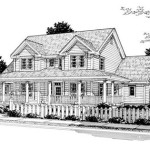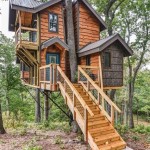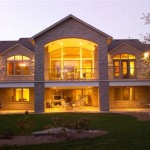Delving into the Architectural Intricacies of Eighteenth Century House Plans
The eighteenth century witnessed a profound transformation in architectural design, marked by the emergence of sophisticated house plans that epitomized the refined tastes and aspirations of the era. These plans, meticulously drafted by skilled architects, laid the foundation for homes that were not only functional but also aesthetically pleasing, reflecting the prevailing architectural styles and social conventions of the time.
Symmetrical Elegance: A Hallmark of Georgian Architecture
One of the defining characteristics of eighteenth century house plans was their adherence to symmetrical principles. Symmetry played a pivotal role in achieving balance and order, creating a sense of harmony and grandeur. The front façade of typical Georgian houses showcased a symmetrical arrangement of windows, doors, and decorative elements, reflecting the classical ideals that influenced architectural design during this period.
Spacious and Well-Proportioned Interiors
Interior spaces in eighteenth century houses were designed with an emphasis on spaciousness and flow. Open floor plans with high ceilings allowed for ample natural light and a feeling of grandeur. Rooms were carefully proportioned, with specific dimensions following mathematical ratios that were believed to enhance aesthetic appeal and create a harmonious living environment.
Formal and Informal Spaces
Eighteenth century house plans typically incorporated a clear distinction between formal and informal spaces. Formal rooms, such as the parlor and dining room, were designed to impress guests and reflect the family's social status. These rooms were often adorned with elaborate decorative elements and furnished with fine furniture. Informal spaces, on the other hand, such as the kitchen and servants' quarters, were more utilitarian in nature and designed for everyday use.
Functional and Efficient Planning
Despite their aesthetic focus, eighteenth century house plans were also designed with an emphasis on functionality and efficiency. Kitchens were carefully planned to ensure a streamlined workflow, with ample storage and work surfaces. Servant quarters were often located in close proximity to the main house, ensuring easy access and minimal disruption to the occupants' daily lives.
Regional Variations: Georgian, Colonial, and Federal Styles
Although eighteenth century house plans shared common characteristics, they also exhibited regional variations reflecting local traditions and architectural influences. In Britain, the Georgian style dominated, characterized by its symmetrical façade, sash windows, and stone or brick construction. In the American colonies, the Colonial style emerged, often incorporating local materials and a more vernacular aesthetic. The Federal style, which flourished in the late eighteenth and early nineteenth centuries, showcased a refined interpretation of Georgian architecture, with delicate details and a focus on symmetry.
Legacy and Inspiration
The architectural principles embodied in eighteenth century house plans have left a lasting legacy in the field of architecture. The emphasis on symmetry, spaciousness, and functionality continues to influence contemporary home design. Many modern homes draw inspiration from the elegant proportions and harmonious flow of eighteenth century houses, reinterpreting these timeless design elements to create homes that are both functional and aesthetically pleasing.

William E Poole Designs Eighteenth Century House Inc

18th Century English Palaces And Stately Homes From Vitruvius Britannicus Architecture Blueprints Architectural Floor Plans Drawing

William E Poole Designs Eighteenth Century House Inc

Some Tips For Mapping Fictional Grand Houses Of The 18th Century Engine Oracles

18th Century English Palaces And Stately Homes From Vitruvius Britannicus Architecture Blueprints Architectural Floor Plans Vintage House

Examples Of Late 17th Century And Early Mid 18th Plans English Houses A College Riba Pix

New England Colonial House Plans Monster

18th Century Colonial Home Designs Consultation

The Farmhouse Dates Back To 18th Century And Was Originally A Bare Bones Functional Design Farmhous Country Style House Plans Floor

Plate 3 Ground And First Floor Plans British History








